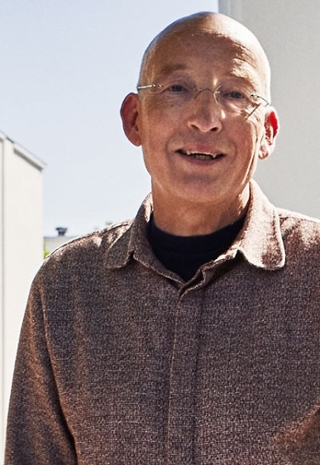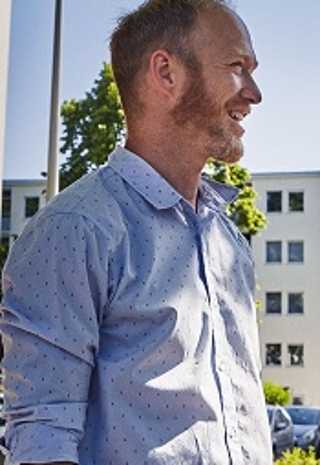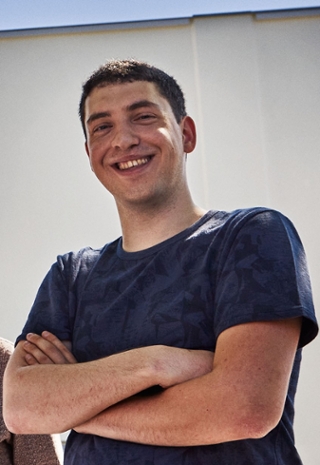
“Most of the wood still ends up in the incinerator.”
At the Amsterdam University of Applied Sciences (AUAS), we work with organisations and companies on the major social issues of today and tomorrow: sustainability, digitalisation and diversity. As good as that sounds, what exactly does it mean?
The renovation or demolition of homes generates many thousands of kilograms of wood each year. Only a fraction of this wood is reused. The Circular Wood for the Neighbourhood project shows that there’s another way.
Giving substance to the circular economy
Housing corporations have committed to the ambitions of the Nationwide Circular Economy Programme. But how do you then implement this? One way is by reusing materials to a high standard. Renovation and demolition of homes generate a lot of scrap material.
A pioneer in energy transition
Together with Amsterdam housing corporations Ymere and Rochdale, the Digital Production Research Group, part of the Centre of Expertise Urban Technology, is looking at what can be made from wood left over from home renovations.
Tony Schoen is the project manager of ‘Circular Wood for the Neighbourhood’ (CW4N) as the project is called. In this project, researchers from the Centre of Expertise are working with Ymere, Rochdale and others to explore how the wood that becomes available through renovations can be given a new life.

“We are a socially responsible company,” explains Joery Jordanov, who is involved in CW4N on behalf of Ymere. “We want to generate less waste and reuse valuable materials as much as possible. Moreover, we want to be a pioneer in the energy transition. This idea fits in with that very well.”
Products with added value for tenants
“The circular economy is a relevant topic for housing corporations,” Schoen explains. Housing corporations are now seeing that they are effectively paying twice: once for the wood used to build homes, and a second time to remove the wood and process it into waste. “For them, this project can provide knowledge about what could be made from that wood, rather than incinerating it unnecessarily. We prefer to make products with added value for the tenants; products that look good, which can also have social value and help start the conversation about circularity.”
The circular economy is a relevant topic for housing corporations.
Jordanov agrees. “Currently, most of our wood goes to the incinerator. This means that it provides energy once.”

According to Jordanov, who studied at the AUAS himself, what’s great about this research project is that it enables Ymere to find out what else can be done with its residual products. “This project also helps me to increase awareness within the housing corporation about how we handle our materials.”
And how does the AUAS benefit from this? In the Robot Studio in the basement of the Leeuwenburg building, students are working on new applications for industrial robots with researchers from the Digital Production Research Group. One of the people working with the robots is Semih Aydin. He is a third-year Engineering student at the AUAS and has a work placement with the Robot Studio. “I’ve worked a lot with the robotic arm during my studies, so it’s not new to me. In my work placement, I am now gaining research experience, which ties in nicely with what I have already learned in my studies.”

Using a robotic arm to remove pieces of metal from wood
Aydin’s work in the Robot Studio includes research on repurposing used wood. The wood that Ymere and Rochdale harvest when renovating their homes cannot be used immediately. It is full of small pieces of metal, such as old screws and nails. “What you want is to detect and remove those pieces of metal without losing too much wood,” Aydin explains. The robotic arm is used to locate pieces of metal, visualise them in a digital environment and remove them as necessary.
Aydin wants to automate the detection system in such a way that he can mark exactly where the pieces of metal are in each wooden door or frame. “The type of metal, the position, that’s the kind of information you need in order to be able to work the wood very precisely as a result.”
Jordanov stops by the Robot Studio from time to time. As partners in the project, Ymere and Rochdale provide knowledge, and also join in to provide input for the research where necessary. “I have a technical background myself, so I’m fascinated by how algorithms can be used to make that robot work. It’s also really cool to work with students to follow the line of reasoning from residual product to new product.”
Because making valuable products is what CW4N is all about. Once all the wood is totally ‘clean’, Tony Schoen and his colleagues can get to work in the studio. They have come up with various uses for the scrap wood, such as tables for the tenants and playground equipment for the neighbourhood.
Research on possible business case
The CW4N project thus looks on a small scale at what can be done with the wood from housing corporations that would otherwise be taken to the waste incinerator. “We’re not a wood factory, of course, so we produce in small quantities,” Schoen explains. However, a possible business case is being considered.
We’re not a wood factory, of course, so we produce in small quantities
For Ymere, it is especially important that the final product serves a social purpose. Jordanov: “We really want it to be an eye-opener for our tenants. By developing physical applications as a landlord, we can help raise awareness of how both tenants and landlords handle materials. That’s important for students as future professionals, for us as a housing corporation and for our tenants.”
Jordanov is therefore confident that the results of CW4N will contribute to Ymere’s sustainability ambitions, and that it can inspire others to look at the waste generated during renovations from a different perspective. “As long as we show through the outcomes that we as a corporation have taken the step to harvest and reuse materials in a different way, this project will be a success.”
I would love to develop something involving drones
For Semih Aydin, in turn, the work placement with the Robot Studio will be successful if it provides him with a stepping stone to a further career in smart industry. The lessons learned from working with the digital production methods will hopefully help him in his future plans to design a product of his own that can actually be used. “I would love to develop something involving drones or automated cars.”

